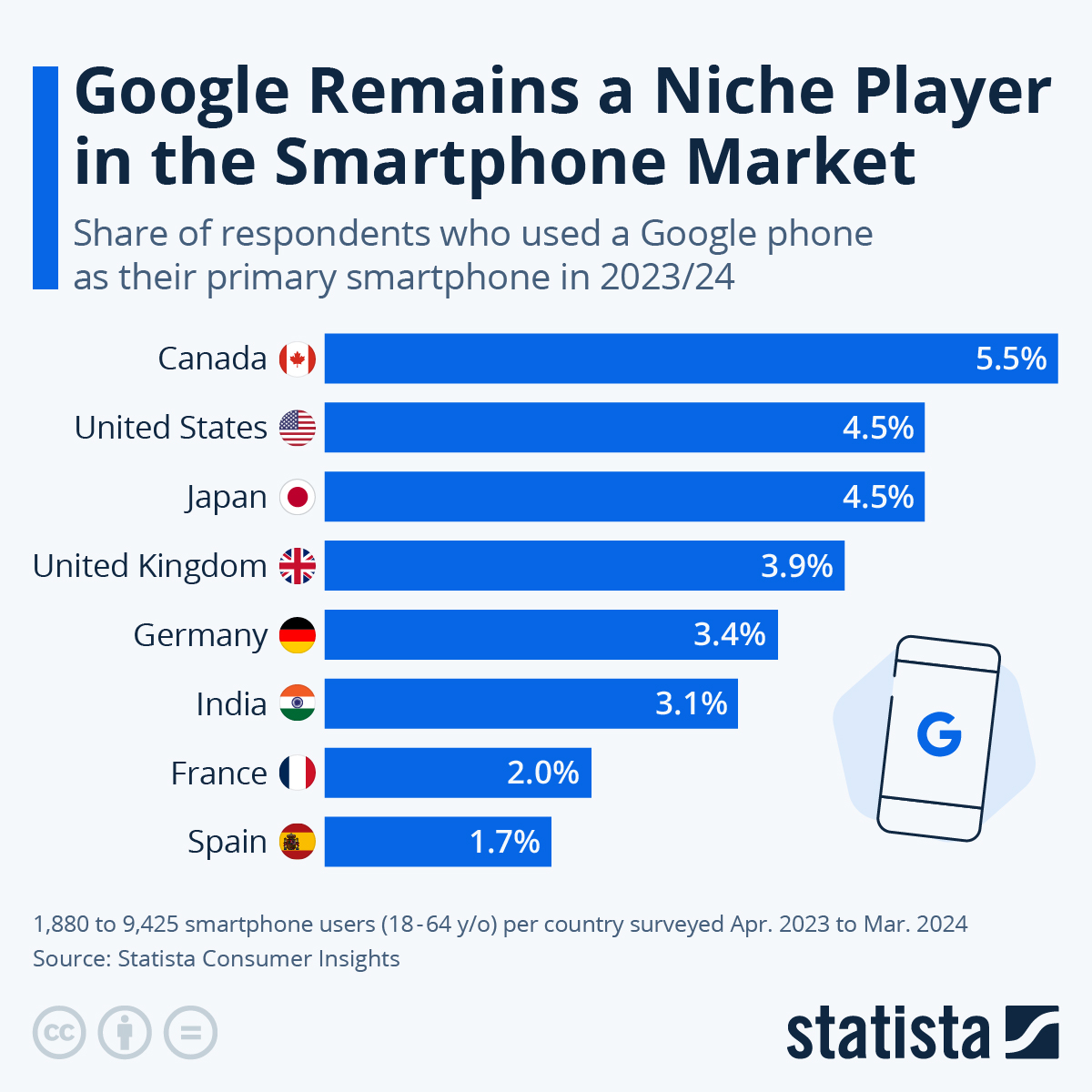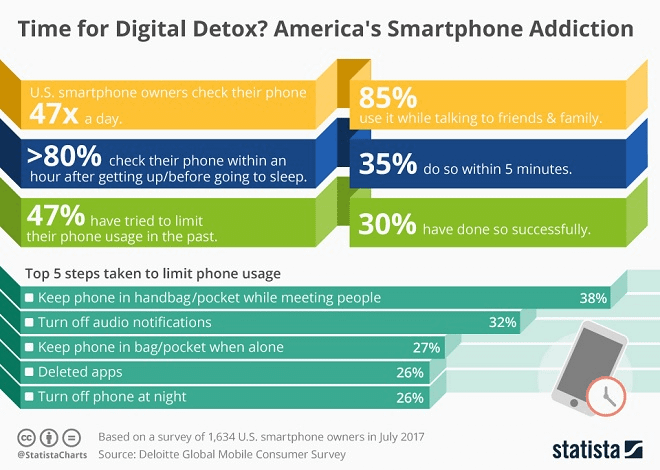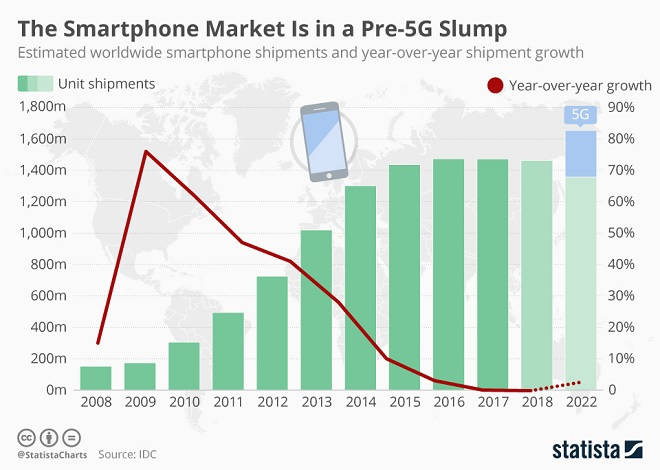Source: Statista
Aside from a lot of AI talk, Google also announced two new Pixel smartphones at its I/O opening keynote early this month, the affordable Pixel 7A and the slightly less affordable Pixel Fold, which is almost four times the price of the Pixel 7A. As its name suggests, the Pixel Fold is Google’s first foldable smartphone, featuring a 7.6-inch screen when flipped open, which brings it close to the iPad mini’s 8.3-inch screen.
Having worked with various hardware makers before, Google debuted the “made by Google” Pixel smartphones in 2016. But despite good reviews and attractive price points, the company never really cracked the smartphone market, selling just a fraction of the devices market leaders Samsung, Apple and Xiaomi move year after year.
According to Statista Consumer Insights, Google remains a niche player in the smartphone market to this day, with less than five percent of smartphone users calling a Google device their main phone in most major markets.



